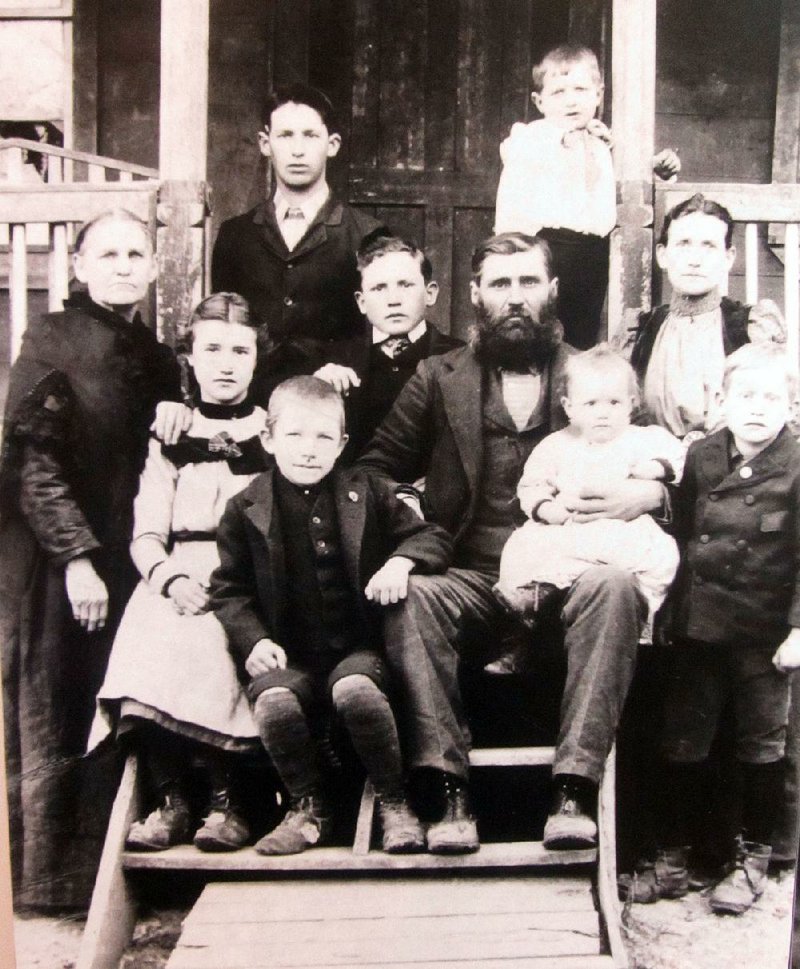TYLER BEND -- The vast majority of the 800,000 or more visitors expected this year along the Buffalo National River are here for the pleasures of the present -- swimming, canoeing, kayaking, hiking, fishing, camping and other fun in the sun.
But the human past is also a visible and fascinating presence in one of Arkansas' most treasured natural resources. Nearly all people living within the preserve's boundaries were required to move elsewhere when the 94,293-acre federal enclave was established by Congress in 1972.
Some of those rural residents deeply resented having to give up their long-held family land for a greater cause. They were losers in the worthy effort to preserve one of the few remaining rivers that still flows freely in the lower 48 states after a century of damming by the U.S. Army Corps of Engineers.
To get a quick sense of life along the Buffalo in former times, the place to begin is the National Park Service's Tyler Bend Visitor Center, near the river's south bank in Searcy County. That can be followed by stops near opposite ends of the park at Rush Historical District and Big Buffalo Valley (aka Boxley Valley) Historic District.
Vintage black-and-white photographs at the visitor center show the rough-hewn circumstances in which pioneering residents lived. National Park Service information notes that from 1880 to 1915, "the remaining public land was entered both by prospective homesteaders and timber companies.
"At times the two came into conflict, as 'squatter land' was legally entered by outside interests. The homesteaders of this period in many cases were trying on a wilderness lifestyle for the first time and needed help in even constructing a simple one-room log shelter.
"Most of these homestead entries were located on less desirable land, away from the river valley and main tributaries. However, new road systems and travel made the ridge-top dweller more accessible to the rest of the world than the earlier settlers would have been. In addition, the increase in schools, churches and community centers aided in decreasing the isolation of these later settlers."
Near the national river's east end in Marion County, Rush Historic District is said to be the only visible ghost town west of the Mississippi River and east of the Rocky Mountains.
Rather than gold, zinc was the ore that brought transient prosperity to Rush, which was founded in the 1880s and saw its population peak at 5,000 during World War I. That's when armament needs for the 1914-1918 conflict drove the price of zinc to record highs.
After that, Rush slowly faded away, with the last residents moving away after the post office closed in the 1950s. What makes a visit evocative today is sight of ramshackle structures built in the town's heyday. Efforts by the National Park Service have countered the decay by time, weather and vandalism.
More idyllic is Big Buffalo Valley Historic District in Newton County, near the national river's western boundary. Also called Boxley Valley Historic District, it is a likely place to spot elk in roadside meadows soon after sunrise or before sunset. It is also the setting for scattered family farms that were allowed to continue operation under some restrictions after 1972.
When the district was established, a principal reason was that many of the original structures remained untouched by modern development. These include log cabins, barns and spring houses. By squinting just slightly while driving along Arkansas 43, it is possible to imagine that the calendar has been turned back any number of decades. There's one definite difference: The road is paved.
Buffalo National River's Tyler Bend Visitor Center, 11 miles northwest of Marshall off U.S. 65, is open 8:30 a.m.-4:30 p.m. daily. Admission is free. Go to nps.gov/buff or call (870) 439-2502.
Style on 08/01/2017

